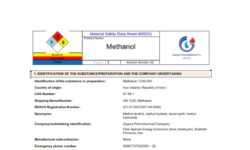A Closer Look at the Intelligence Support Activity
The Intelligence Support Activity (ISA) is one of the most clandestine units in the U.S. military, specializing in gathering critical, time-sensitive intelligence to support special operations forces. Known for its highly secretive operations and direct-action capabilities, the ISA plays a crucial role in modern military strategies. While the broader public knows little about its missions, the impact of the ISA is felt in some of the most sensitive and high-stakes operations undertaken by U.S. forces.
Origins and Evolution of ISA
The Intelligence Support Activity was formed in the early 1980s, following the failure of Operation Eagle Claw—a botched attempt to rescue American hostages in Iran. This operation exposed a major intelligence gap in coordinating and supporting special operations, prompting the creation of a unit capable of rapidly acquiring intelligence in hostile environments. Initially operating under various codenames such as “Gray Fox” and “Centra Spike,” the ISA quickly became a key player in the world of military intelligence.
Unlike conventional intelligence units, the ISA has a mandate to gather real-time human intelligence (HUMINT) and signals intelligence (SIGINT). Its operatives work both independently and alongside special forces, such as SEAL Team Six and Delta Force, to ensure missions are executed with precision and access to the most up-to-date intelligence.
Key Functions of the ISA
The ISA’s primary mission is to collect intelligence that other agencies or military branches are unable to obtain. It specializes in gathering HUMINT and SIGINT, but it also conducts covert direct-action missions when necessary.
- Human Intelligence (HUMINT): ISA operatives are trained to infiltrate enemy territory, gather intelligence from human sources, and establish networks of informants. These operations often involve high-risk scenarios, where discretion and quick decision-making are essential.
- Signals Intelligence (SIGINT): The ISA excels in intercepting and analyzing electronic communications, giving U.S. forces an edge by monitoring enemy movements, intentions, and communications. SIGINT allows commanders to anticipate threats and coordinate attacks with precision.
- Direct Action Missions: Although intelligence gathering is its primary function, the ISA is capable of performing direct-action missions when needed. These missions might include capturing high-value targets, rescuing hostages, or conducting sabotage operations to disrupt enemy infrastructure.
Involvement in Major Operations
The Intelligence Support Activity has been involved in numerous critical operations since its inception. While much of its work remains classified, reports suggest that the ISA was instrumental in tracking down high-profile terrorists during the War on Terror. It is believed that the unit played a key role in locating individuals such as Pablo Escobar and later contributed to the intelligence efforts that led to the raid on Osama bin Laden’s compound.
The ISA operates globally, often in environments where conventional military units cannot function effectively. Whether it’s urban areas, remote regions, or conflict zones, the ISA’s ability to gather real-time intelligence ensures that U.S. forces are always a step ahead of their adversaries.
The Role of Secrecy in ISA Operations
Given the nature of its missions, the Intelligence Support Activity operates with a high degree of secrecy. Very little is publicly disclosed about its structure, personnel, or operations. This secrecy ensures that the unit can perform its tasks without interference or risk of exposure, but it also raises questions about accountability and oversight.
While the lack of public information has led to speculation and intrigue, it is clear that the ISA remains one of the most effective tools in the U.S. military’s arsenal. Its ability to adapt to new threats and leverage cutting-edge technology makes it a vital asset in both traditional warfare and counter-terrorism efforts.
The Intelligence Support Activity plays a critical role in modern military operations, combining intelligence collection with the capability to execute precision missions. Though much of its work remains shrouded in secrecy, the ISA’s importance in supporting U.S. special forces cannot be overstated. With its focus on HUMINT, SIGINT, and direct-action capabilities, the ISA ensures that U.S. military operations are backed by the best intelligence available—making the difference between success and failure in high-stakes situations.



